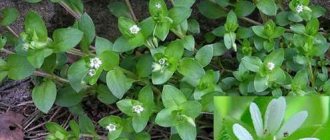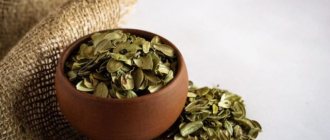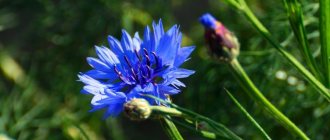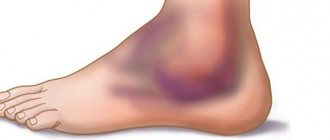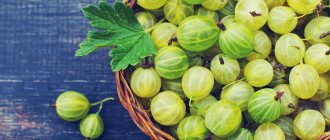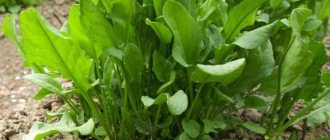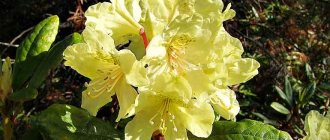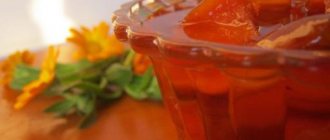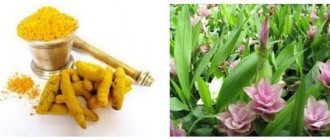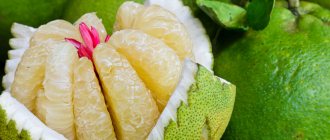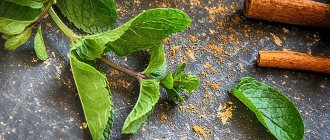Chemical composition of corn
Corn contains substances beneficial to the body that help it fight various diseases. Eating it gives you energy.
The benefits of corn are not limited to the kernels alone. Many substances necessary for the body are contained in its inflorescences, leaves and stigmas.
Corn is characterized by a high content of phytosterols (in 100 g - 127% of the daily value), the main part of which is beta-sitosterol (148%), which allows us to classify corn as a feminine product.
Calories 325 Kcal
- Fat:
4.9 g - Proteins:
10.3 g - Carbohydrates:
60 g - Water:
14 g - Ash:
1.2 g - Fiber:
9.6 g
| Minerals (per 100 g): | Quantity | %RDN |
| Bor | 270.0 mcg | 385,7% |
| Vanadium | 93.0 mcg | 232,5% |
| Silicon | 60.0 mg | 200,0% |
| Rubidium | 61.1 mcg | 61,1% |
| Nickel | 83.8 mcg | 55,9% |
| Manganese | 1090 mcg | 54,5% |
| Cobalt | 5.3 mcg | 53,0% |
| Zirconium | 24.5 mcg | 49,0% |
| Iron | 3.7 mg | 24,7% |
| Zinc | 1730-2210 mcg | 16,4% |
| Potassium | 287 mg | 11,5% |
| Vitamins (per 100 g): | Quantity | %RDN |
| Vitamin B7 (biotin) | 21.0 mcg | 42% |
| Vitamin B6 (pyridoxine) | 0.62 mg | 31% |
| Vitamin B1 (thiamine) | 0.39 mg | 22,9% |
| Vitamin B3 (PP, niacin) | 3.63 mg | 18,2% |
| Lutein + zeaxanthin | 644-1355 mcg | 16,7% |
| Vitamin B4 (choline) | 71.0 mg | 14,2% |
| Vitamin B2 (riboflavin) | 0.20 mg | 10% |
| Vitamin C (ascorbic acid) | 6.8 mg | 7% |
| Vitamin B9 (folic acid) | 19.0 mcg | 4,8% |
Full chemical composition of corn ➤
Patients with gout need to remember that corn is characterized by a fairly high content of purines: in 100 g - 47% of the daily value.
Carbohydrates.
Starch is the main carbohydrate in corn, accounting for 28–80% of dry weight. Regular corn contains only 1-3% sugar, but sweet corn (a special low-starch variety with a higher sugar content) contains 18% of the dry weight. Most sugar is sucrose. Despite the sugar in sweet corn, it is a low to moderate glycemic index food.
100 grams of raw corn contains about 94 - 98 kcal. However, the nutritional value of the product varies depending on the method of its preparation and processing.
Corn flour already contains 336 kcal, canned corn - 103 kcal, boiled grain - 97 kcal, cereal - 336 kcal, porridge - 98 kcal, bread - 261 kcal. The highest calorie content of corn oil is 898 kcal per 100 g of product. A salted boiled cob will provide the body with 402 kcal, and corn flakes – 356 kcal.
Cellulose.
Corn contains a lot of fiber. Even regular movie popcorn (an average cup of ~112 grams of popcorn) boasts approximately 16 grams of fiber, which is ~53% of the daily value for men and women. Although the fiber content of different types of corn varies, it is typically around 9–15% of the dry weight.
Protein.
Depending on the variety, the protein content ranges from 10–15%. The most abundant proteins in corn are known as zeins [1], which account for 44–79% of the total protein content. However, the protein quality of zeins is poor as they lack some essential amino acids.
Corn is an essential staple in the context of global nutrition!
The advantage of corn is that it is a hypoallergenic product, since it does not contain copper and nickel salts.
Composition and medicinal properties
- Corn is quite beneficial for the human body. This is evidenced by a large number of different experiments being conducted.
- Corn silk contains large amounts of ascorbic acid, essential oils and pantothenic acid;
- Stigmas have a fairly strong choleretic property, which is a long-known fact;
- Thanks to corn, the total level of bilirubin is significantly reduced, which helps reduce the viscosity of bile and helps normalize the functioning of several organs;
- Preparations that contain corn help stop bleeding of varying degrees, while significantly increasing blood clotting;
- Corn, despite its high calorie content and nutrient content, will help those people who want to lose weight. This is explained by the fact that corn can reduce appetite.
Article on the topic: Stretched crow's foot - useful properties, description
Health benefits of corn
Corn is a source of vitamin E. It can cover the body's daily need for this natural antioxidant. Vitamin E slows down the aging process of cells and improves immunity. The grains of the plant contain a sufficient amount of vitamin A, which is represented in them by beta-carotene. This substance is essential for maintaining healthy eyes and skin. Vitamin A is an antioxidant that protects cells from free radical damage.
Corn is a source of minerals. It contains a lot of manganese, phosphorus, iron, zinc, magnesium, copper and selenium. Phosphorus from corn grains is necessary for kidneys and bones. Magnesium ensures normal heart function. This microelement of bone tissue is required, as it is responsible for their density.
Eye health
Macular degeneration and cataracts are among the most common vision disorders in the world and leading causes of blindness, and nutrition plays a key role.
Eating antioxidants, especially carotenoids such as zeaxanthin and lutein, may improve eye health. Lutein and zeaxanthin are the predominant carotenoids in corn, accounting for about 70% of the total carotenoid content (with the exception of white corn, which is low in these antioxidants). High levels of these carotenoids in the blood are strongly associated with a reduced risk of both macular degeneration and cataracts.
One study found that 356 people who consumed carotenoids—specifically lutein and zeaxanthin—had a 43% lower risk of macular degeneration than those with the lowest intake of these carotenoids. [2]
Reduces the risk of developing diverticulosis
Diverticulosis is a condition characterized by the presence of pouches in the walls of the colon. The main symptoms are cramps, flatulence, and bloating.
Regular consumption of corn will help prevent the development of diverticulosis.
One 18-year study of 47,288 men confirmed that popcorn protected against diverticular disease. Men who ate the most popcorn were 28% less likely to develop diverticular disease than men with the lowest intake. [3]
In addition, corn is a source of fiber. A glass of grains can provide a fifth of the body's daily requirement for this fiber. Fiber stimulates peristalsis of the organ, activates the production of gastric juice and bile.
Corn is gluten free
Gluten, known as gluten, is not found in corn. The harm of this substance has been well studied. Gluten can disrupt digestive processes and increase bloating in people who suffer from celiac disease. In children, eating gluten leads to intestinal colic. Adults develop diarrhea or constipation. Malfunctions of the gastrointestinal tract have a negative impact on the condition of the skin.
However, corn contains proteins known as zein, which are related to gluten! One study found that corn zein caused an inflammatory response in a subgroup of people with celiac disease. However, the response to zein was much less than that of gluten. However, scientists have suggested that corn consumption in rare cases may be responsible for persistent symptoms in some people with celiac disease. [4]
Good source of antioxidants
The antioxidants contained in corn help the body destroy free radicals. They are the ones that can cause the growth of cancerous tumors.
Ferulic acid (the record holder is beets) from corn has antitumor activity. As we found out during scientific research, it exhibits increased cytotoxicity towards breast and liver cancer. [5]
It is important that after heat treatment corn does not lose its beneficial qualities. Moreover, it becomes even more useful.
Heart Defender
Corn oil helps in the fight against atherosclerotic vascular disease. Regular consumption of corn oil in food can reduce the level of bad cholesterol and improves the lipid profile of lipoproteins in plasma. The heart and blood vessels will not suffer from overload, so the risk of heart attack and stroke is reduced. [6]
Oil extracted from corn cobs provides the body with Omega-3 fatty acids. There is evidence that corn helps control blood pressure levels, so it is useful to eat for both hypertensive and hypotensive patients.
Prevents anemia
Anemia is not a problem for people who eat corn. This cereal plant contains not only iron, which red blood cells need, but also folic acid. Their regular intake into the body is an excellent prevention of anemia. Additionally, the combination of vitamin A and β-carotene in corn increases iron absorption. [7]
However, be aware of the phytate content in corn, which interferes with iron absorption. Soaking, sprouting and fermenting corn can significantly reduce phytic acid levels.
Lowers LDL cholesterol
Dr. Robert Nicolosi from the University of Massachusetts found that consuming corn oil helps reduce LDL (the so-called “bad” cholesterol) in the blood. While HDL levels, on the contrary, increase. This has a beneficial effect on the condition of the heart and blood vessels. The incidence of heart disease in people is reduced, and atherosclerosis is diagnosed less frequently. The body independently destroys free radicals. To achieve these effects, it is enough to include corn oil in your diet. [8]
Helper for diabetics
Although corn is a high-calorie food, it can be consumed by people suffering from type 2 diabetes. Grains contain phytosterols, which control insulin production. These substances prevent sharp increases and decreases in blood sugar levels. Therefore, corn is a healthy product for all diabetics. [9]
Composition and therapeutic effect
The therapeutic effect when treating with corn silk is achieved due to the following pharmacological properties:
- diuretic;
- choleretic;
- hemostatic;
- decongestant;
- anti-inflammatory;
- hypoglycemic;
- restorative.
The unique beneficial properties of corn silks are largely due to their chemical composition, which contains the following substances.
- Fatty oil. Corn oil is the main active ingredient and remedy. It activates the functioning of the gallbladder and accelerates metabolic processes. The unsaturated fatty acids contained in corn oil regulate cholesterol metabolism and prevent its deposition on the walls of blood vessels. In addition, it contains phosphatides that help fight atherosclerosis, obesity and other endocrine diseases.
- Essential oils and bitter glycosidic substances. Can improve appetite and normalize digestion. They have a diuretic effect.
- Vitamins K and D. Promotes the absorption of calcium and prevents the development of osteoporosis, also prevents bleeding and hemorrhage.
- Group of B vitamins. Help strengthen the nervous system, control metabolic processes and glucose levels in the body.
- Vitamin C. Has general strengthening properties, increases the body's resistance.
- Vitamin E. Natural antioxidant, protects the human body from premature aging.
In addition, corn “hair” contains many useful substances and minerals, including selenium. It boosts immune strength, neutralizes harmful substances and inhibits the growth of cancer cells.
Use of corn in folk medicine
Corn has found wide use in folk medicine in different countries:
- To relieve inflammation of the urinary system
, to remove tape parasites from the body and to treat urolithiasis, a decoction of corn silk was used by South Slavic healers.
- Diseases of the gallbladder and biliary tract
East Slavic healers treated with corn decoction. They also used it as a diuretic.
- Asian healers used corn to fight tuberculosis.
Flatbreads made from this cereal were widely used in the treatment of skin diseases. They were soaked in vinegar and applied to eczema and cracks in the limbs. To improve visual acuity, followers of Asian folk medicine chewed corn grains and applied them as a compress to the eyes, and also used this gruel to relieve itching after insect bites. Corn was used as food for diseases of the digestive system. An enema was prepared based on corn flour, which was given to patients with intestinal ulcers.
Today, traditional healers in many countries continue to actively use corn silk as a sedative. It is believed that they calm the nervous system and help relieve tension. It is recommended to take corn silk internally for people suffering from glaucoma, conjunctivitis and vitreous hemorrhages.
Decoctions and infusions of corn silk
In order for decoctions and infusions based on corn silk to have the desired effect on the body, they must be prepared and taken according to a certain scheme.
Corn silk
Diseases of the biliary tract.
Recipe:
- 2 tablespoons of corn silk, crushed.
- They are steamed with boiling water in a volume of 0.25 liters.
- Leave it covered for half an hour, then strain.
Take 60 ml infusion 3 times a day before meals.
Bleeding disorders
. The infusion is prepared in the same way as in the previous recipe, but the volume of the stigmas is increased to 100 g. You need to take it one tablespoon every 60 minutes.
To combat edema, kidney disease, as a diuretic
. Recipe:
- 1 teaspoon of crushed stigmas is poured into 200 ml of boiling water.
- Cover the container with a lid and leave for 30 minutes.
- Strain the composition.
Drink the infusion 3 times a day before meals, 2 tablespoons.
For stones in the kidneys and ureters
. Recipe:
- 1 teaspoon of stigmas is poured into 200 ml of water.
- Place the pan on low heat and simmer for 60 minutes.
- If the water evaporates, it is added to the original volume.
- When the broth has cooled, it is filtered.
You need to take the medicine 4 times a day before meals, 1 tablespoon.
For hemorrhages in the retina of the eye.
Recipe:
- 15 g of stigmas are poured into 200 ml of boiling water.
- Keep the infusion under a closed lid for 40 minutes.
- Strain the composition.
You need to take the product 3 times a day, 2 tablespoons.
With uterine bleeding
. The method of preparing the recipe is similar to the previous one, but corn silk is taken in the amount of a teaspoon, and the exposure time is reduced to 20 minutes. You need to take the infusion 3 times a day, 20 minutes before meals. Volume – 2 tablespoons.
To get rid of excess weight
. Recipe:
- 4 tablespoons of stigmas are infused for 3 hours in a thermos.
- Strain the liquid.
Take the drug half an hour before meals, 3 times a day. Volume – 1 tablespoon.
Corn (Zea mays L.)
A well-known fodder and food annual herbaceous plant up to 3 m high. Corn columns with stigmas, which have choleretic, diuretic and hemostatic properties, are used for medicinal purposes.
Table of contents
In medicine
A decoction of corn columns and silks is used for chronic hepatitis, non-calculous cholecystitis, biliary dyskinesia, and mild edematous syndrome.
Starch, flour, cereals, corn flakes, alcoholic beverages, molasses, and glucose are obtained from corn grains. Corn oil is widely used in cooking and dietetics. Corn grains and unripe cobs are eaten.
Classification
Corn (lat. Zea mays L.) belongs to the cereal family (lat. Poaceae, or Gramineae). The genus Corn (lat. Zea) includes 4 varieties of annual herbaceous plants.
Botanical description
This is an annual large herbaceous plant of the cereal family up to three and sometimes more meters high. The stem is thick and hollow. The leaves are alternate, wide, linear-lanceolate, vaginal. Inflorescences are dioecious. Male flowers are collected in a large panicle at the ends of the stems, female flowers - in a spadix in the axils of the leaves of the same individuals. The fruit is a yellow or green-yellow compressed grain, kidney-shaped, protected by a greenish leaf-shaped involucre. Blooms in July - August. Ripens in September - October.
Spreading
Not found in the wild. They are cultivated in Ukraine, the Caucasus, Central Asia, and are cultivated almost everywhere in Russia. Southern Mexico and Guatemala are considered the birthplace of corn.
Procurement of raw materials
Corn stalks with stigmas are used as medicinal raw materials. The cobs are collected in the phase of milky-waxy ripeness or when they are cleaned, dried in the shade or at a temperature of 25-30 ° C. Shelf life 1 year.
Chemical composition
In medicine, corn stalks with silks are used, which contain phytosterols (sitosterol, sitosterol, stigmasterol), essential and fatty oil (up to 2.5%), bitter glycosides (1%), alkaloids, flavonoids, saponins (3%), inositol, cryptoxanthin , vitamins (K1, B1, B2, B6, C, E, D), pantothenic acid, gum (3.8%), resins (2.7%), bitterness, trace elements (iron, manganese, copper, chromium, aluminum ). Seeds, endosperm of corn seeds and corn oil also contain a wide range of biologically active substances and are used in medicinal practice. An important component of seeds is starch, which has enveloping properties. Corn oil contains unsaturated fatty acids (80%), phosphatides (1.5%), and tocopherol.
Pharmacological properties
Preparations from corn silk are used as a diuretic, anti-inflammatory, choleretic, hemostatic agent in the treatment of kidneys (urolithiasis, nephritis, cystitis), liver (cholecystitis, hepatitis), urological diseases, edema of various origins. Corn silk preparations have a moderate sedative effect and can also reduce appetite.
Corn oil, obtained from the germ of corn seeds, regulates cholesterol levels in the blood, reduces its deposition on the walls of blood vessels, reduces the risk of blood clots and has a choleretic effect.
Use in folk medicine
Boiled corn on the cob with butter is used for constipation, liver diseases, gout, nephritis and diseases of the cardiovascular system.
Historical reference
Literature
1. Biologically active substances of plant origin. In B. N. Golovkin, R. N. Rudenskaya, I. A. Trofimova, A. I. Shreter 3 volumes. M.: Publishing house Nauka, 2001.
2. State register of medicines. Official publication: in 2 volumes - M.: Medical Council, 2009. - Volume 2, part 1 - 568 pp.; Part 2 - 560 s.
3. Illustrated guide for botanical practices and excursions in Central Russia. Skvortsov V.E. M.: Partnership of scientific publications KMK, 2004. – 506 p.
4. Kyosev P.A. Medicinal plants: the most complete reference book. – M.: Eksmo, 2011. – 944 p.
5. Medicinal plants. Beffa M. T. M. AST "Arstel". 2005.– 255 p.
6. Medicinal plants of the central zone of the European part of Russia. Ed. N.L. Kuchina. M. "Planet" 1992.
7. Medicinal plants on a personal plot / A. M. Rabinovich. M.: ID SME, 1998. 336 - p.
8. Medicinal raw materials of plant and animal origin. Pharmacognosy. Edited by G. P. Yakovlev, St. Petersburg, SpetsLit Publishing House, 2006, 845 p.
9. Medicinal plant raw materials. Pharmacognosy: Textbook. allowance / Ed. G.P. Yakovlev and K.F. Blinova. – St. Petersburg: SpetsLit, 2004. – 765 p.
10. Muravyova D.A. Pharmacognosy: Textbook. - M.: Medicine, 1991. - 560 p.
11. Nosov A.M. Medicinal plants in official and traditional medicine. M.: Eksmo Publishing House, 2005. – 800 p.
12. Rabinovich A.M., Rabinovich S.A. Medicinal and spicy-aromatic plants of Russia. – M.: OLMA-PRESS, 2001. – 319 p.
Article on the topic: Yellow acacia - beneficial properties, description
13. Plants for us. Reference manual / Ed. G.P. Yakovleva, K.F. Blinova. – Publishing house “Educational Book”, 1996. – 654 p.
14. Plant resources of Russia: Wild flowering plants, their component composition and biological activity. Edited by A.L. Budantseva. T.3. M.: Partnership of scientific publications KMK, 2010. – 601 p.
15. Directory “Medicinal Herbal Remedies”, ed. G.E. Pronchenko, 2002 M.: GEOTAR-MED, 288 p.
16. Fursaev A.D. I. and others. Medicinal plants and their use in medicine. Publishing house Saratov. 1962.
17. Etymological dictionary of Latin botanical names of medicinal plants. Svetlichnaya E.I., Tolok I.A. – Kharkov: NUPh Publishing House: Golden Pages, 2003. – 288 p.
Corn (lat. - Zea) is a herbaceous plant and belongs to the Cereals family. This is an annual plant whose normal height is 3 meters. It must be said that there have been cases when the height of corn reached 6 meters. The main feature of the plant is that it has a fairly well-developed root system. If the plant is large in size, then in such cases you can notice the appearance of additional aerial roots, which help the plant to better stay in the ground. The stem of the plant has an erect shape, the diameter of which reaches 7 centimeters. The stem is also unique because its structure is not hollow inside.
Corn leaves are lanceolate-linear and are quite large in size. The width of the sheets reaches 10 centimeters, and the length often does not exceed 1 meter. Inflorescences have different structures, but often they include staminate and pistillate flowers.
The place of origin, or more precisely, the place where corn was introduced into culture, is the Balsas Valley, which is located in Mexico. Thanks to the discovery made by Columbus, corn came to Europe, which played a fairly serious historical role. It should be noted that at the moment corn is one of the most important crops grown by humanity. The largest producers of this plant are: USA, Brazil, Argentina, India, China, Mexico, Italy, South Africa, France and Indonesia.
Contraindications and possible harm
Corn can bring not only benefits to the body, but also harm.
It comes down to the following points:
- Phytic acid.
Phytic acid impairs the absorption of dietary minerals such as iron and zinc from the same meal. This may be a problem for you if grains and legumes are your staple foods. Remember that soaking, sprouting and fermenting corn can significantly reduce phytic acid levels. [10]
- Mycotoxins.
Corn is often contaminated with fungi, usually due to improper storage. The main classes of mycotoxins in corn are fumonisins, aflatoxins and trichothecenes. Fumonisins deserve special attention. For example, one observational study in South Africa found that regular consumption of cornmeal may increase the risk of developing esophageal cancer. [eleven]
- Gas formation.
Heaviness in the stomach, bloating and increased gas production, and can also provoke irritable bowel syndrome. These symptoms only develop if you overeat corn, eating more than 1 cob per day. [12]
- Allergic reaction of the body.
It rarely develops on a product, but it cannot be ruled out. If you have an individual intolerance to corn, avoid eating it.
Women who are breastfeeding should remember that corn can increase gas formation. They need to use the product with caution to prevent bloating in the child.
You should not include corn in your diet if you have an exacerbation of gastric ulcer. The grains contain substances that increase blood clotting. Therefore, if you are prone to the formation of blood clots, you should discard the product.
How to choose?
The benefits of boiled corn depend on the original product. When going to the market, remember: the tastiest are young cobs of sweet varieties. Buy ones that are covered with fresh green leaves.
Sometimes sellers tear them off completely or partially. Pay attention to waste. Among them there should not be any dried, rough, damaged or stained ones.
Here are some more tips:
- The grains should be adjacent to each other (not too tightly), and be approximately the same size.
- Make sure there is no mold or fungal infection. Clean, evenly colored seeds and leaves without plaque are a good sign.
- If you see a worm, don't be alarmed. This means that this is a natural, completely safe product. To avoid cooking a living thing, tear off the top where it is located.
- Press your finger into the grains. They should be soft and elastic. Dense means old. Even if you cook them for a long time, they will not become juicy. Maximum – crumbly.
Learn to distinguish sweet corn from feed corn. The first will be ready in 20 minutes, and the second in 3 hours. Sugar has regular round (not cubic) grains with smooth contours. They are arranged in even vertical rows. If you crush a grain of the coarse variety, you will feel the starch on your fingers, and the juice will spray out of the sugar.
Selection and storage
When purchasing corn for boiling, you need to pay attention to the following parameters:
- Color of grains.
If they are white or light yellow in color, then the cobs are young, which means they will be soft and more tasty. A rich yellow color indicates that the grain is ripe.
- Density and grain size.
They should be the same size, elastic, but soft to the touch. The grains are arranged in high-quality cobs in even, dense rows.
- Defects.
If pits are visible on the grains, then the cobs were stored incorrectly, or they were overripe in the field. It is better to refuse to buy such corn.
- Leaves.
They should tightly cover the cob and have a green color.
The shelf life of raw corn can be extended by almost a month if you dip it in a special solution. To prepare it for 1 liter of cold water you will need: a teaspoon of citric acid and salt. The holding time for the cobs is 30 minutes. Then the grains need to be removed, dried, placed in a hermetically sealed container and placed in the refrigerator. If you freeze such grain, it will remain fresh all winter.
Boiled corn cannot be stored. To keep it hot longer, you can wrap it in foil. If the cob is uneaten, wrap it in cling film and put it in the refrigerator. You can freeze boiled corn. To do this, it is dipped first in ice and then in hot water, after which it is dried, put in a bag and sent to the freezer.
When purchasing canned corn, you need to pay attention to the release date. If the packaging indicates summer or early autumn months, then the grains are fresh. Canned food from frozen raw materials is made in winter and spring. Before placing them in a jar, they are treated with hot steam.
The shelf life of canned corn is 3 years. It cannot be stored in a metal can after opening. If it has not been completely used, it must be poured into a glass container, filled with brine, covered with a lid and put in the refrigerator. Under such conditions, the product will remain fresh for another 3 days.
If the grains are sour, they can be used as fish bait. However, the jar must be tightly closed to prevent the unpleasant aroma from spreading throughout the refrigerator.
What are the benefits of corn flakes and popcorn?
Parents often allow their children to eat corn sticks, and they prepare corn flakes for breakfast. These foods can only benefit the body if they are actually made from grains. The more flavors, dyes and trans fats they contain, the more harm they cause to the body.
Dried corn or popcorn is a good source of fiber and folic acid, as well as phosphorus, magnesium, zinc, copper, manganese (however, manganese is not absorbed due to the presence of phytic acid). Vitamin B9 takes an active part in the process of hematopoiesis and also regulates metabolic processes in the body.
However, while popcorn is a whole grain food that is supposed to reduce the risk of heart disease and type 2 diabetes, it is not good for the heart.
You can offer children corn sticks and cereal, but you need to choose a product that does not contain artificial additives. It is useful to eat cereal with yogurt and kefir. It's best to save these dishes for an afternoon snack rather than breakfast. This way you can get the most out of them.
Is corn oil good or bad?
Corn oil is used to prepare various dishes, and is also consumed internally in its pure form. It is a source of enzymes needed by the body.
Refined oil does not contain any specific odor or pesticides. Therefore, it is added to baked goods, foods are fried on it, and it is used to make sauces. This oil can be offered to young children. It is included in the diet of people who follow a diet menu.
Unrefined oil does not undergo special purification. Impurities remain in it. However, real benefits can only be obtained from such oil. It has a rich color and a characteristic aroma. This indicates that all vitamins have been preserved in the product. They will be lost during refining.
In order not to harm the body, unrefined oil should be stored in the freezer, in a dark container.
Unrefined oil contains high amounts of vitamin E, ubiquinone (Q10) and phytosterols, which increases its shelf life and makes it potentially effective in lowering cholesterol levels.
Varieties and cultivation
Corn is a heat-loving plant that needs plenty of sunlight. Seeds begin to germinate at temperatures from +8 degrees. If the values on the thermometer fall below -3 degrees, the seedlings die. The plant tolerates drought well, but it requires at least 450 mm of precipitation to maintain life.
There are 9 botanical groups, 4 species, 3 wild subspecies and more than 1000 hybrid varieties of cultivated corn. They have different shapes, colors and sizes, and produce different yields.
- Sugar maize.
The variety has a high sugar content. The grains are yellow in color, although there are subspecies with both pale and orange cobs. Harvesting begins before the plant reaches full maturity. Cook the corn as quickly as possible, otherwise the starch levels in the kernels will increase and they will become tough.
- Maize is toothy.
The mature beans of this variety have a pit that makes them look like a human tooth. The varieties are late or mid-late, the yield is high, as well as resistance to pests and diseases.
- Waxy maize.
The grains can be yellow, red or even white. This variety is planted separately from other subspecies of corn. Productivity is not stable, the plant is susceptible to unfavorable environmental factors, but it is valued for its 100% amylopectin starch.
- Maize is starchy.
The grains are yellow or white, 80% soft starch, and contain a minimum of protein. This determines the scope of use of corn: it is used to make alcohol, flour and molasses.
- Maize is flinty.
The grains can be either yellow or lilac in color. The variety is characterized by high yield, is not susceptible to disease, and contains a lot of starch. They are used to prepare cereals and flakes. The second name of the variety is Indian corn.
- Maize is filmy.
Its grains are covered with scales, so farmers rarely plant this variety.
- Maize popping.
The grains are high in protein. When heated, they burst and form a fluffy lump, which is why this variety is used for making popcorn.
There are many varieties of corn in the world, and there are some that will seem outlandish to the residents of our country:
- Japanese corn
, which is called the mother-of-pearl miracle. Its stems are thick and succulent, covered with multi-colored stripes that combine yellow, green, red and orange shades. This type of corn is often planted along fences and walls as a decorative hedge. Designers often use cobs to create amazing interior compositions.
- Kaleidoscope (Glass Gem).
The grains of this corn resemble multi-colored transparent glass. The combinations are not repeated, as they are created by nature itself. When dining on such a cob, you can be sure that there is a single copy on the table that no one else can have. The grains are used to make popcorn.
- Peruvian black.
It is considered not only the most ancient, but also the most useful. The grain of this variety is black, the stem is powerful, the roots are located above the surface of the ground, have a purple color, and the leaves are covered with dark stripes. In Ukraine, this variety is called “Mama Sarah”.
- Strawberry.
The length of the cob is no more than 10 cm, the base is wide and the apex is narrow. The shape of this corn resembles a strawberry. Its reddish tint enhances the similarity. The grains are small and sweet and contain many nutrients. The flour made from them also has a red color, for which culinary experts value it
- White.
This variety has many hybrids, including: “White Cloud” (used for making popcorn), “Snow Avalanche” (the grains are sweet and juicy), “Snow Queen” (contains a large amount of sugar), “Thompson Prolific” (very popular in America ).
Unusual types of corn
Who can eat corn harm?
There is a downside to corn's rich chemical composition. This grain crop takes a long time to digest in the stomach. Therefore, you should not eat it at night or in excessive quantities - more than 2 ears per day. If you ignore this advice, you will experience bloating and a feeling of heaviness.
We recommend: Macadamia – what kind of nut is it and why is it worth trying?
Corn has the following contraindications for consumption:
- increased blood clotting, the presence of blood clots;
- peptic ulcer and gastritis in the acute stage;
- underweight.
There is no prohibition for pregnant women. On the contrary, while waiting for a baby, the need for vitamins and minerals increases, and corn makes up for their deficiency. In nursing mothers, the grain crop enhances lactation and improves the chemical composition of breast milk.
Genetically modified corn: facts
Italian scientists have found that genetically modified corn is not subject to contamination with mycotoxins (waste products of mold fungi). This allows you to reduce the risk of intoxication of the body when eating grains.
GMO technologies help increase yields by 5-25%. All research results were published in the journal Scientific Reports.
A meta-analysis of studies that lasted for 20 years found that genetic modification of corn reduces the risk of poisoning from low-quality grains.
The meta-analysis includes studies conducted from 1996 to 2021. It included 6006 papers, from which 79 best papers were selected. They compared yield, grain quality, and the rate of reproduction of biological microorganisms in conventional and genetically modified corn. The interaction of crops with insects was taken into account.
The following results were obtained:
- The GMO corn yield was 5-25% higher. It was grown in the same areas as the regular product.
- GMO corn is 29-36% more resistant to fungal mycotoxins.
These mycotoxins are dangerous to the human body. They lead to the development of serious poisoning, kidney damage and even increase the risk of developing cancer. Despite the fact that regular grain undergoes cleaning, the possibility of intoxication remains.
More details:
Scientific explanations about genetically modified food
What is corn
Despite the fact that the cultivation of corn began 7 thousand years ago by the inhabitants of Latin America (Mayans, Aztecs, Incas), it came to Europe only in the 16th century and even later to Asia and Africa. At the turn of the 17th-18th centuries, the inhabitants of Hungary and Romania learned about corn, who immediately dubbed this plant “yellow flasks”.
Content:
- What is corn
- The nutritional value
- Effect on the body
- Top useful properties
- Some Caveats
- How to choose the right one
- Areas of use
- Corn in folk medicine
- Corn in cooking
Corn is a herbaceous, erect annual plant that grows up to 2-4 m. There is an assumption that it is the oldest cereal plant on the planet [1]. Modern corn differs significantly from its wild ancestor in both color and higher yield. Interestingly, it is impossible to find wild corn in nature today. Instead, biologists know many varieties of modern crops, and not all of them have the usual yellow color. Today, breeders know white, red and even blue corn. Depending on the purpose, nine main groups of this culture are distinguished: siliceous, sugar, tooth-like, starchy, waxy and others [1]. The ideal conditions for growing corn are subtropical climates, although they also grow well in temperate latitudes.
Healthy dishes with corn
The tastiest and healthiest are the cobs, which are found in whole leaves. Once they are skimmed, the corn sugar begins to transform into starch. This explains the mealy taste of the cobs after the season ends.
Corn soup
Ingredients:
- Corn – 1 kg.
- Beef – 0.5 kg.
- Potatoes – 0.5 kg.
- Tomatoes – 100 g.
- Adjika – 1 tsp.
- Onions, carrots, garlic and herbs to taste.
Preparation:
- Broth is prepared using the meat.
- Add corn and potatoes to it and cook for 15 minutes.
- Onions and carrots are chopped, fried in oil, tomatoes, adjika, seasoning, garlic and salt are added.
- Vegetables are added to the soup 10 minutes before the end of cooking.
Corn bread
Ingredients:
- Corn flour - 1 cup.
- Chicken egg – 2 pcs.
- Milk – 1 glass.
- Soda – 3/4 tsp.
- Salt – 3/4 tsp.
- Sugar – 1/2 tsp.
Preparation:
- Mix with a fork, but do not beat the egg, milk, salt, soda and sugar.
- Add corn flour to the mixture. Continue stirring with a fork. The dough should be liquid.
- Grease the baking dish with oil. It is best to choose small molds, so the dough will bake better.
- Before pouring it into the molds, mix the dough again.
- Bake bread in the oven at 180 degrees. Check readiness with a toothpick.
Bread can be prepared with various fillings: ham, cheese, vegetables and herbs. To prepare dessert, candied fruits or dried fruits are added to the dough.
Composition and calorie content of corn
Currently, largely thanks to Nikita Khrushchev, who had a special favor for corn, it is grown throughout Russia, although mostly in the Rostov and Volgograd regions, in the Krasnodar Territory; however, we can buy delicious and healthy corn oil everywhere.
Corn is not only tasty, but also really healthy and even has medicinal properties.
. At the same time, it is distinguished by its ability to not accumulate fertilizers, and therefore, from an environmental point of view, it is safer than many plant products.
Corn is quite high in calories
- it contains more calories than some varieties of beans or peas - about 320-340 kcal per 100 g. Fresh corn of milk ripeness is especially rich in nutrients: it is rich in carbohydrates, it contains sugars, a little fat, proteins, dietary fiber; There is a lot of starch in corn.
Of the vitamins, group B is in first place (8 vitamins), and most of all in corn there is choline - vitamin B4, which has many important properties: it protects cell membranes, normalizes cholesterol levels in the blood, calms, improves the functioning of the nervous system and metabolic processes, helps maintain normal body weight. Other vitamins – A, E, H – beauty vitamin; minerals – phosphorus, potassium, magnesium, sulfur, calcium, chlorine, sodium, iron, zinc, iodine, copper, manganese, selenium, chromium, fluorine, molybdenum, boron, vanadium, silicon, cobalt, nickel, tin, titanium, aluminum.
It is noteworthy that the content of all these substances is closely related to the color of corn - cobs with bright grains always contain more of them.
In folk medicine, “corn silk” has always been used to treat diseases.
- beautiful soft hairs framing the cobs on all sides; official medicine also uses them. However, both corn grains and flour also have good medicinal properties, but they also have enough contraindications, so you should not be treated with them without consulting your doctor.
